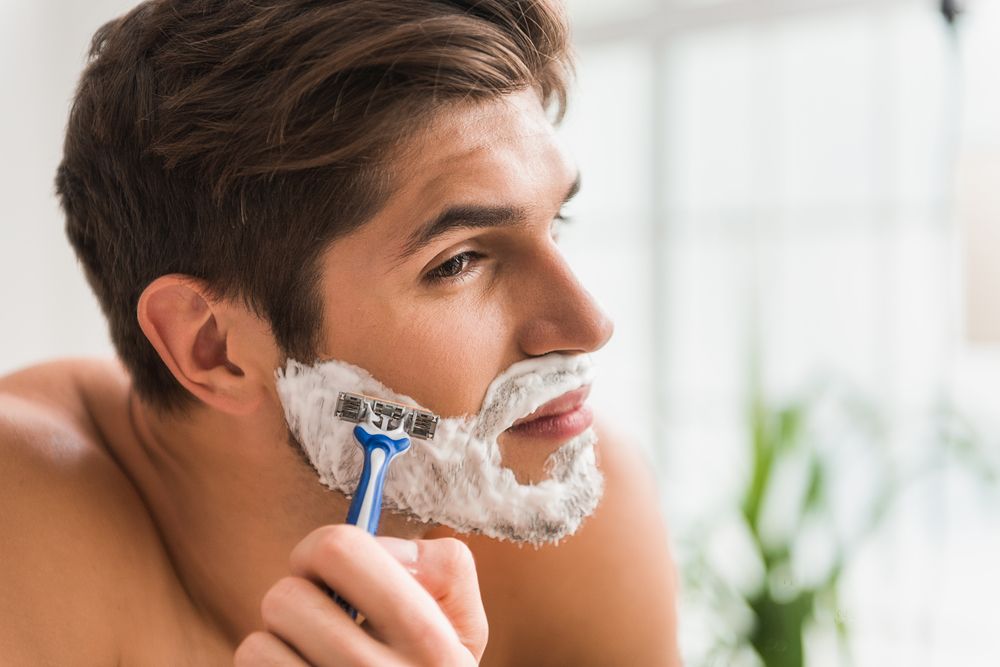A close, smooth shave starts with more than just a sharp razor — it begins with the right shaving cream. Whether you’re shaving your face, legs, underarms, or any other part of your body, a quality shaving cream softens hair, lubricates the skin, and helps prevent irritation, razor burn, and ingrown hairs.
But not all shaving creams are created equal. From traditional lathering formulas to modern gels and creams for sensitive skin, the best product for you depends on your skin type, hair texture, and personal preferences. This guide will help you understand the types of shaving creams available and how to choose one that gives you a consistently comfortable, close shave.
1. Understand the Role of Shaving Cream
Shaving cream is more than just foam — it plays a crucial role in protecting the skin and preparing hair for shaving.
Key Benefits:
-
Softens hair follicles, making it easier for razors to cut through
-
Lubricates the skin, reducing friction between the blade and your skin
-
Creates a barrier to help prevent nicks, cuts, and irritation
-
Moisturizes and conditions the skin, leaving it smooth and healthy
Skipping shaving cream or using a poor-quality product can lead to dryness, razor burn, or skin damage — especially if you shave regularly.
2. Types of Shaving Creams and Their Differences
Shaving products come in several forms, each with pros and cons depending on how you shave and what your skin needs.
Traditional Lathering Creams:
-
Found in tubs or tubes
-
Applied with a shaving brush for rich, foamy lather
-
Excellent lubrication and moisture retention
-
Best for close, classic wet shaves
Non-Lathering Creams:
-
Creamy consistency, applied by hand
-
No need for a brush or bowl
-
Quick and convenient for daily shavers
-
Suitable for sensitive skin or minimalist routines
Shaving Gels:
-
Clear or translucent
-
Great for precise shaving (e.g., shaping beards or eyebrows)
-
Often contain menthol or aloe for cooling effect
-
May not be as moisturizing as cream-based formulas
Shaving Foams:
-
Aerosol cans with ready-to-use foam
-
Widely available and easy to apply
-
Can be drying due to propellants or alcohol content
If comfort, skin care, and results matter to you, traditional creams and quality non-lathering formulas tend to outperform foams in both protection and hydration.
3. Match the Formula to Your Skin Type
Understanding your skin type can help you avoid irritation and get the most from your shaving routine.
For Sensitive Skin:
-
Look for fragrance-free and alcohol-free products
-
Choose creams with soothing ingredients like aloe, chamomile, or oatmeal
-
Avoid harsh foams or menthol-heavy formulas
For Dry Skin:
-
Choose creams with added moisturizers like shea butter, coconut oil, or glycerin
-
Avoid foams or gels with drying agents
-
Consider a post-shave balm for added hydration
For Oily or Acne-Prone Skin:
-
Use lightweight or gel-based formulas
-
Look for non-comedogenic ingredients
-
Avoid heavy oils or pore-clogging additives
Choosing a shaving cream that complements your skin type can make a dramatic difference in both comfort and results.
4. Consider Your Hair Type and Shaving Area
Not all body hair is created equal. Coarser hair or sensitive areas may require a richer, more protective product.
For Coarse Hair:
-
Opt for thick, rich creams that soften hair follicles
-
Warm the cream before applying to enhance performance
-
Lathering creams often work best for stubborn beard growth
For Fine or Light Hair:
-
Light, moisturizing gels or creams may be sufficient
-
Focus on glide and hydration rather than thick lather
For Body Shaving (legs, arms, underarms):
-
Creams with added moisturizers are ideal for large surface areas
-
Avoid harsh menthol if shaving sensitive zones
Matching your cream to the area you’re shaving ensures less irritation, fewer ingrown hairs, and better glide.
5. Examine the Ingredients List
Not all shaving creams are skin-friendly. A closer look at the ingredients can tell you a lot about how a product will perform.
Ingredients to Look For:
-
Glycerin: Draws moisture into the skin and helps razor glide
-
Shea butter or coconut oil: Nourishes and protects dry or sensitive skin
-
Aloe vera or chamomile: Soothes irritation and inflammation
-
Essential oils (lavender, sandalwood, eucalyptus): Provide scent and mild antiseptic properties (avoid if sensitive)
Ingredients to Avoid (if sensitive):
-
Alcohol or denatured ethanol: Can dry and irritate skin
-
Parabens and sulfates: Potentially irritating or unnecessary preservatives
-
Strong fragrances: May cause allergic reactions or stinging
A quality product should focus on skin support, not just scent or foam.
6. Choose Between Scented and Unscented
Scent is a personal preference, but it can also affect your skin. Many shaving creams come in a variety of fragrance profiles.
Scented Creams:
-
Offer a more luxurious or barbershop-like experience
-
Common scents include sandalwood, mint, citrus, and lavender
-
Best for users without fragrance sensitivity
Unscented or Hypoallergenic:
-
Ideal for sensitive or reactive skin
-
Still effective without the risk of irritation
-
Often formulated with soothing botanicals instead of perfume
If you’re unsure, start with an unscented formula and experiment once you know how your skin responds.
7. Consider Application and Shaving Tools
The tools you use — whether a cartridge razor, safety razor, or electric shaver — can influence the best cream for your routine.
Cartridge Razors:
-
Work well with most non-lathering or gel creams
-
Benefit from light to medium lubrication
Safety Razors:
-
Pair best with rich, lathering creams for maximum protection
-
A shaving brush helps create ideal foam and exfoliates skin
Electric Razors:
-
May not need traditional cream; opt for electric pre-shave lotions or gels
Your chosen cream should enhance your razor’s performance, not interfere with it.
8. Evaluate Packaging and Portability
Depending on where and how you shave, the packaging might matter more than you think.
Tubs and Jars:
-
Best for home use with a shaving brush
-
Allow control over how much product you use
Tubes:
-
Travel-friendly and hygienic
-
Easy to dispense, especially for non-lathering creams
Aerosol Cans:
-
Convenient but less eco-friendly
-
May not offer the best skin care ingredients
If you travel often or shave in the shower, a tube with a secure cap is the most practical choice.
9. Set a Budget That Reflects Quality
Shaving creams can range from under $5 to over $40 depending on ingredients, branding, and packaging. Price often reflects concentration and skin care benefits.
Budget Options ($5–$10):
-
Basic formulas, mostly foams or gels
-
Ideal for quick, low-maintenance shaves
Mid-Range ($10–$25):
-
Better quality ingredients and more hydration
-
Suitable for daily users with mild skin concerns
Premium ($25+):
-
Artisan brands, natural ingredients, luxurious scents
-
Great for sensitive skin or grooming enthusiasts
Don’t just go by price — look for reviews, ingredients, and performance to determine real value.



